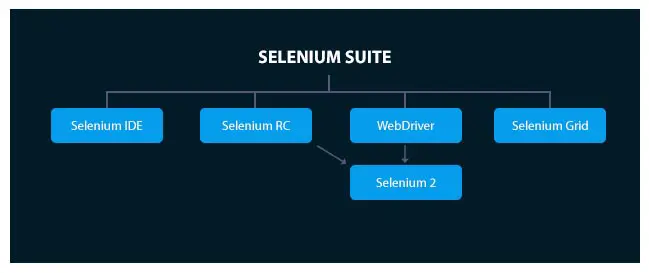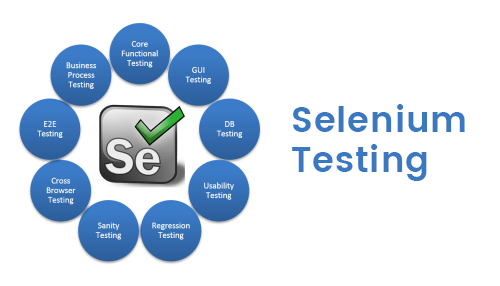Introduction to Selenium
Have you ever thought about why testing plays a crucial role in the software development lifecycle? Have you ever heard of automation testing? If yes, then you might be aware of what Selenium automated testing is. If no, then it’s time for you to go ahead and get a read on this entire post to understand the importance of Selenium web driver in the IT world.
Selenium is a widely used tool for automated testing of web applications. Initially, multiple organizations and testers worldwide used Selenium IDE and the benefits of automation testing Selenium saved a lot of time and effort. However, the major downside of automated testing with Selenium IDE was that it would only work with Firefox. Selenium RC was introduced to resolve the issue, and this enables Selenium to support automated cross-browser testing.
Websites today are becoming more robust with multiple features. Not only they should work properly on desktop but also in iOS as well as Android. Selenium RC gradually lagged as it did not have website testing browser compatibility across different devices. Selenium Webdriver testing got introduced to solve all these issues.
What is Selenium Web Driver?
Selenium web driver supports several features that were not supported by the primitive versions of Selenium. Moreover, it can test dynamic websites, meaning, the website where the content in a page changes dynamically on click of a button or other user functionalities.
Selenium webdriver can be summarized as:
1. A library for browser automation
2. Managing browser version
3. Relies on language proved tools such as Junit, Jasmine
4. Does not have built-in frameworks for running tests
5. Provided for almost every programming language
Selenium Web driver is not a standalone tool. It is an API that allows users to interact programmatically with a browser in a real way.
Selenium web driver is often referred to as Selenium 2.

What are the Programming Languages used to create Selenium Webdriver tests?
With Selenium webdriver, you can pretty much use whatever programming language you want to create your automated test. Here are the programming language supported by Selenium webdriver testing:
1. Selenium webdriver Java
2. Selenium webdriver Javascript
3. Selenium webdriver Python
4. Selenium webdriver C#
5. Selenium webdriver Ruby
Let’s see in detail how Selenium web driver is different from Selenium RC & IDE.
How Is Selenium WebDriver Different From Selenium RC and IDE?
Apart from supporting multiple languages or having some cool features, there are a host of other features that makes Selenium web driver differ from Selenium IDE or Selenium RC. Let’s take a look.
1. Selenium IDE works only in Mozilla while RC and webdriver works in Safari, Opera, Firefox, Chrome, IE, and many other browsers.
2. With Selenium RC the user is required to start a server before a script is executed, but with webdriver and IDE, you will not require to start any server.
3. Selenium webdriver has a larger API and can be a bit complex when compared to IDE and RC.
4. Selenium IDE supports record and playback while on the other hand they are not supported by Selenium webdriver and RC.
5. Android and iOS application testing is supported in webdriver and not in IDE or RC.
6. The APIs are not object-oriented in Selenium IDE. In Selenium RC, it’s a little object-oriented, and on WebDriver, they’re completely object-oriented.
7. Selenium IDE and RC use JavaScript as their core engine while there’s no core engine for webdriver and the application can be natively worked using only the browser.
8. When it comes to the application type, Selenium IDE is a GUI based plug-in. With Selenium RC being a Java-based standalone application, users can execute HTML based test suites with it. Whereas Selenium webdriver offers multilingual support over different programming languages with the help of language bindings.
Why Automation Testing with Selenium WebDriver Should Be Your Preferred Choice?
Now that we are all aware of what Selenium webdriver is and how it is different from other versions of Selenium. Let’s discuss the benefits of automated testing Selenium with webdriver.
1. Works Across Multiple OS: One of the major benefits of Selenium webdriver automation testing is it supports multiple OS like Mac, UNIX, Linux, and Windows. A customized testing suite can be created using Selenium’s solution suite to be used over any platform. With the web driver, you can now create a test case on Windows and execute the same on Mac.
2. Cross-Device Testing: Support across multiple devices is another added benefit of automation testing with Selenium webdriver. As automated test cases can now be written for testing on Android, Blackberry, and iPhones testing, this will help in addressing cross-device issues.
3. Open-Source: One of the significant benefits of automated testing Selenium with web driver is the fact that it’s open source. It provides all the features of QTP and is completely free of cost. You can download It directly from the official site and being community-based, support for the tool is also available.
4. Cross-Browser Compatibility Testing: Benefits of Selenium web driver automated testing has expanded the support for cross-browser testing. It supports all the major browsers including Yandex, Safari, Chrome, Firefox, Edge, IE, Opera, and many more. When the users execute cross-browser testing of a website, the webdriver provides them with an automated solution.
5. Community Support: The support of Selenium is mostly community-based, thereby enabling regular updates and upgrades. You can avail of any update whenever required and this does not require any specific training. This makes the webdriver resourceful as well as budget-friendly.
How OdiTek Solutions Can Help In Automation Testing With Selenium WebDriver On Cloud?
To execute automated cross-browser testing, Selenium WebDriveris helpful to install the tool on local workstations. But there are certain limitations to it. Your local workstation may not have all the browser versions installed and come with the limited OS.
That’s where OdiTek Solutions comes to help you. Using a cloud-based, scalable, and cross-browser testing platform you can execute Selenium tests thoroughly through the Selenium grid. It will provide you access to perform browser compatibility testing for your application across different browsers and make sure that your application is rendered perfectly across all of them. Additionally, you can also test your application across different devices as well as OS.
If you’re looking for an automated testing suite to make your testing easier, the Selenium webdriver should be your preferred choice.







